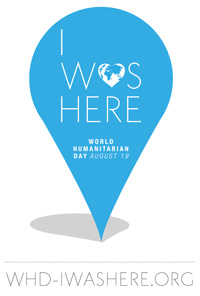ILIGAN, Philippines – Life can change in an instant. When tropical storm Washi struck the Mindanao region of the Philippines in December 2011, thousands of homes were suddenly destroyed and over 500,000 people were displaced. By mid-January, over 1,200 people were reported killed.
Through its youth-to-youth initiative called Y-Peer Network, UNFPA, the United Nations Population Fund, quickly mobilized youth volunteers in various evacuation centres to help identify pregnant women in need of assistance and to organize information sessions with young people. When a crisis strikes, family and social structures are disrupted: adolescents may be separated from their families or communities, while formal and informal educational programmes are discontinued.
Anzaira Roxas, 26 years old, spent two months in Northern Mindanao region where 30,000 people had been displaced. As the Y-Peer Network's focal point in the Philippines, Anzaira worked relentlessly at mobilizing youth who assisted in medical missions and helped distribute dignity kits. These kits included basic hygienic items such as soap, underwear and sanitary napkins.
"I also trained internally displaced youth in camps and organized stress relief activities," Anzaira explains, "Some of them now believe that despite being victims, they can rise above the situation and help others who are more in need."
A long-time interest in helping others
By the time she was 12, Anzaira had told her family she wanted to be a community doctor. Today, Anzaira already holds two degrees – she is a nurse and a midwife. "Despite having two degrees, it is difficult to earn money in the Philippines," explains Anzaira, "but I realize that my country needs me to help improve the lives of women and young people."
After completing her studies, she worked in providing services to women and young people involved in sex work. Today, while she leads her country's Y-Peer Network, Anzaira also works with UNFPA's implementing partner, the Family Planning Organization of the Philippines.
Discussion around sexual and reproductive health in a fairly religious country like the Philippines remains taboo. While Anzaira is very active with the Catholic Church, she has also managed to gain respect from her peers and continues to advocate for the rights of women and young people to access life-saving information on sexual and reproductive health.
At the height of the humanitarian crisis, Anzaira was able to organize groups of young people, even young men who belonged to gangs. "I remember from our information sessions in the camps a young man called Arthur, who was a drinker and drug user," says Anzaira. "He was encouraged to attend our peer education training on reproductive health in humanitarian settings and was initially reluctant as he thought we were recruiting young people to attend church activities. But after the training, he told us that he needed to change his life and continue to volunteer in helping other youth."
Another weather-related crisis
As World Humanitarian Day (19 August) approaches, the Philippines is grappling with a new humanitarian crisis. On 30 July 2012, a tropical storm named Saola turned into a typhoon which caused several days of heavy rains and flooding.
By 6 August, 51 people had been killed and over 16,000 people had taken shelter in evacuation centres. Again, Anzaira and her peers are ready to help their communities who are in need.
"In everything I do, I keep on emphasizing what I have learned thanks to UNFPA," says Anzaira. "Young people are not the problem of our society, but rather, they are part of the solution."





